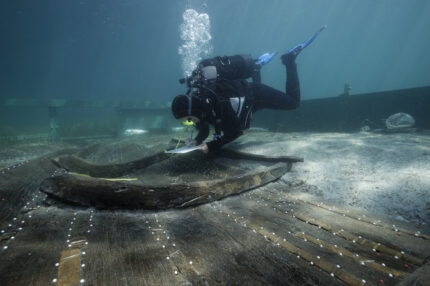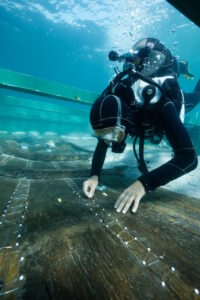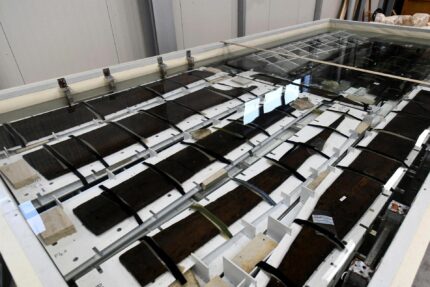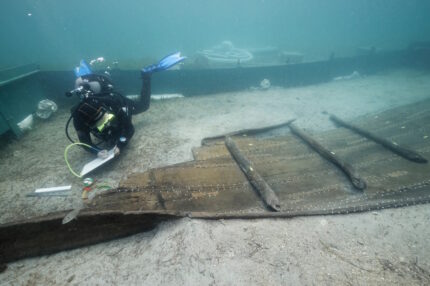
The surviving boat is 22 feet long and and 5’3″ wide, but scholars estimate the vessel was 32 feet long and more than seven feet wide when it was intact. Five different types of wood were used in its construction: elm, alter, wild pear, poplar and fir, all but the last of them commonly found near the coast. The fir had to have been brought in from a mountainous region. It is also unique for its strake assembly technique (diagonal stitches in plain view) and the way it was waterproofed by inserting thin wood pieces coated with an adhesive (likely a mixture with pitch or resin) between the planks. These techniques have never been seen in any other Mediterranean wrecks.
The vessel was constructed by the local Histrian people who were known for their seamanship and piracy. It was a mastless rowboat designed for rapid and flexible navigation on coastal waterways. It would have been operated by seven to nine rowers.

The Zambratija wreck was first spotted by a fisherman who finally reported it to the Archaeological Museum of Istria in 2008. Underwater archaeologists partially excavated the wreck in 2011 before complete a full excavation in 2013. Four samples of the planks were radiocarbon dated during the excavations, revealing it was far older than the Roman-era sewn boat archaeologists had initially believed it to be. The wreck was then reburied for its own protection.
In the summer of 2023, a team from the Archaeological Museum of Istria in Pula, Croatia, the Centre Camille Jullian (CNRS/AMU) in Aix-en-Provence, France, and the Ministry of Culture of the Republic of Croatia returned to the site to painstakingly remove the boat piece by piece. It was thoroughly documented and photographed in situ to make a 3D digital model.
Before the scientists eventually decided to take it out of the water, a delicate operation that took place last July, the wreck was protected with a metal construction.
The Zambratija was eventually recovered in 15 separate fragments, which were transported to a museum hangar. There, they were cleaned, analysed and tagged before being put in a specially constructed pool to desalinate.
Restorer Monika Petrovic jokingly refers to the historic find as “our wooden planks”. At first, the water was changed every two or three weeks, now once a month, she told AFP.
“We are measuring the water salinity and within some two months Zambratija will be ready for the next conservation phase in Grenoble” France, she added.
The fragile remains will be transported to a pool in the Arc-Nucleart research laboratory, which specialises in the conservation and restoration of ancient archaeological objects.
Once the ship has been rebuilt, it will go on display in a new museum in Pula dedicated to the maritime history of Istria.
* This article was originally published here










No comments:
Post a Comment